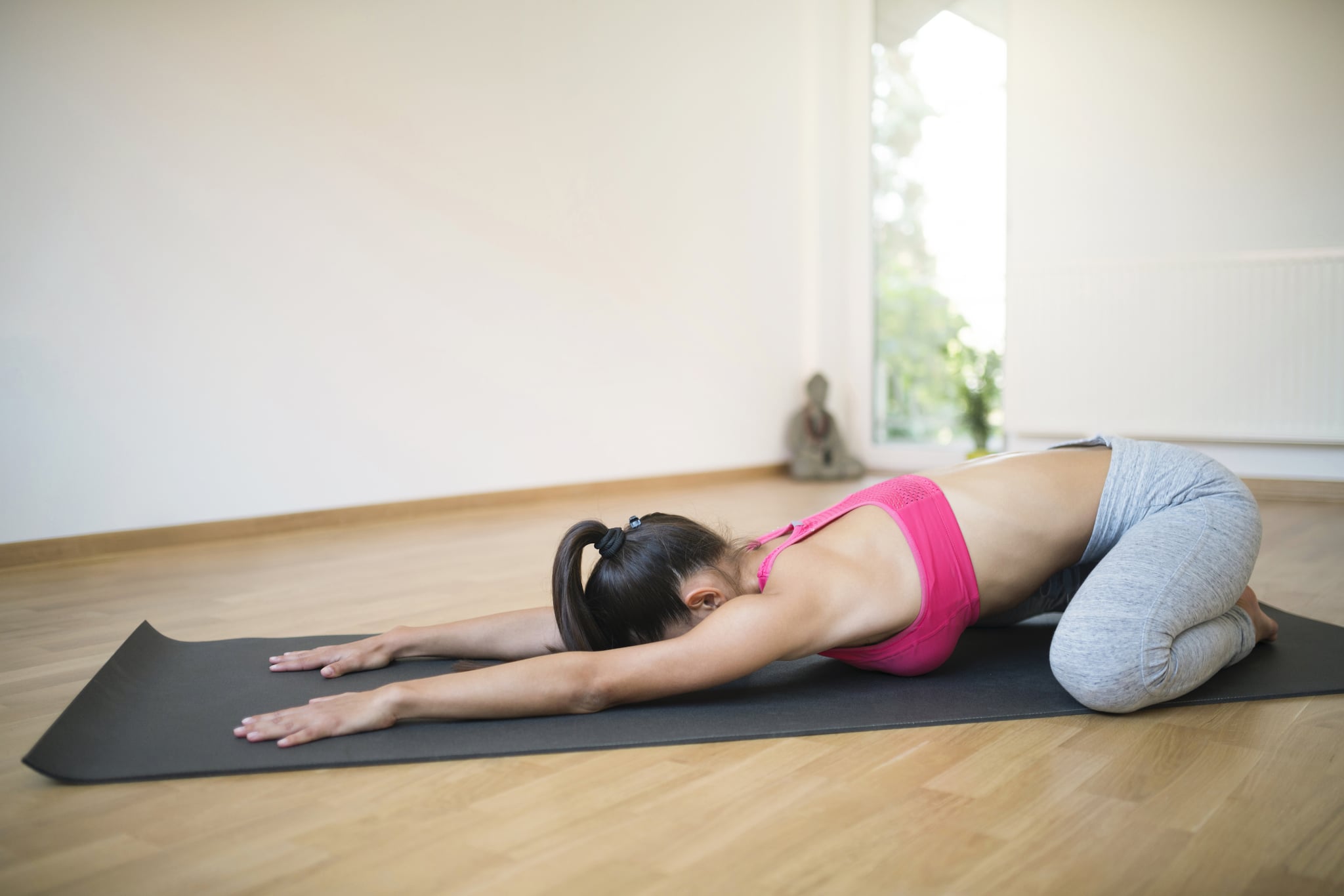
"You know what Yin Yoga is, right?" my friend asked me as we walked to an after-work class at Modo Yoga Studio [1]. The answer was not. a. clue. I blindly booked it because, at 7:30 p.m., it fit perfectly into my busy schedule.
That's when I really started to freak out, fearing it was an intense advanced flow filled with challenging poses [2] and headstands. After a few minutes of panic, she kindly assured me that it was like nothing I had ever experienced before from a hot yoga class — and had an inkling I would absolutely love it.
She was right.
Instead of continuously moving through flows for 60 minutes, the Yin Yoga class I attended consisted of mostly seated positions — like Child's Pose and Pigeon Pose — held for three to five minutes each, while simultaneously focusing on your breath. In the class, I was instructed to commit to my position, to find what feels good and hold it, and then listen to my body's response to the stretch.
My muscles were very sore from a difficult lifting workout, and the slow-moving stretching helped gently release the tension. What I valued even more was the calming, meditative nature of the practice. I walked in upset and overwhelmed by life's daily stresses, but thoughtfully holding each pose helped me to quiet my racing thoughts and live (or stretch) in the present. I even let out a few tears in the release.
I left stretched, calm, mentally rejuvenated, and excited to learn more about the Yin Yoga practice. So I got to Googling and reached out to an instructor for all the details.
It turns out the Yin-only method was popularised in the late '70s and '80s [3], but Yin poses have been practiced, studied, and added into sequences for hundreds of years.
According to certified yoga instructor Frantz Hall [4], Yin Yoga truly allows you to open up the body differently than other types of yoga. "Yin Yoga touches ligaments, joints, the fascial network, and some believe down the bone structure of the body. Depending on the practitioner, it can also be very beneficial mentally, spiritually, and energetically," he explains.
While flow-based practices are considered "Yang," or more active and primarily concentrated on musculature of the body, Hall says that "Yin" is active in a different way, going deeper into the body and using muscles to support the body instead of sinking into the joints. Many of the poses are practiced seated on the floor.
"If you think of muscles as being more elastic and the others being more plastic, it takes a bit of gentler practice with longer holds in order to open the Yin tissue [or connective tissue]," Hall says. "Breath is also important in Yin to calm the mind and aid in the softening of tense areas."
And that feeling of zen and self-assurance I glided out of the studio with? It's a testament to Yin's mental and spiritual nature.
"In this busy world, a Yin practice allows us to take our time, to bring our attention inward, notice how our bodies feel, and overall mindfulness," Hall explains. "When you step into a Yin class you have the opportunity to leave the world on the other side of the door for just a little while. The stillness of Yin can be quite meditative and reflective if you choose. When I find myself fidgety in Yin, I always ask myself why."
Before trying advanced Yin poses, Hall recommends practicing with a certified Yin Yoga instructor, but there are a few Yin poses of which you might already know.
Here are a few that Hall considers pretty safe to attempt at home, but he suggests speaking to a doctor or certified professional about your physical limitations before beginning any practice.
Child's Pose:
You can do this with your knees together or apart, depending on what feels comfortable. Your arms can be stretched out, or, if your knees are together, alongside your body.
It's a very comforting pose, which opens the hips and glutes.
Having your forehead on your mat or a block or pillow gives a sense of calmness.
If there is sensitivity in the knees, you can also use a block under your hips.
Butterfly Pose:
Sit with the soles of your feet together and your knees open to the sides of the room for a stretch in the hips. Gently folding forward gives you a deeper stretch.
Caterpillar Pose, or Forward Fold:
Sit on the floor with your legs stretched out in front of you (you can sit on a pillow or block and bend your knees if it feels more accessible). Fold over your legs, making sure you fold at the hips as opposed to your back. Make sure you feel it mostly in your hamstrings. An alternative to this and Child's Pose is sitting in a chair and folding over your legs.
